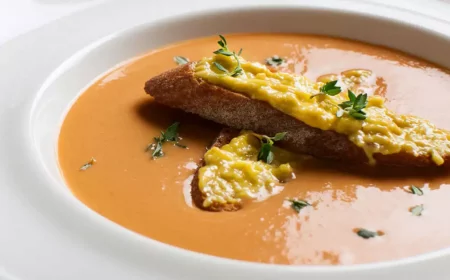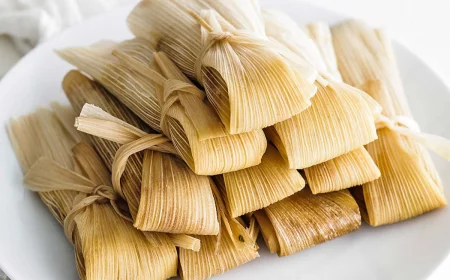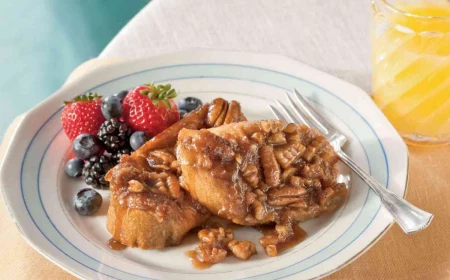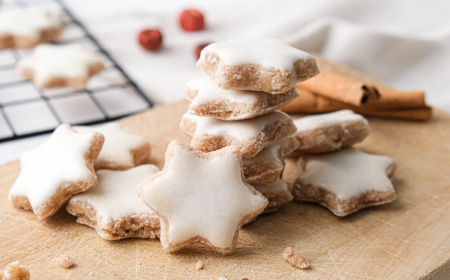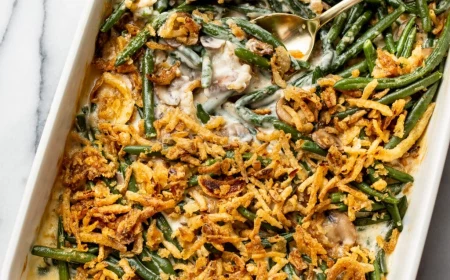Forget the Rules: Here’s How to Build an Amazing Charcuterie Board
I’ve spent more than a decade in professional kitchens and catering, which is a fancy way of saying I’ve assembled literally hundreds of cheese and charcuterie boards. I’m talking everything from small, cozy platters for two all the way to massive grazing tables for huge events. And if there’s one thing I’ve learned, it’s that a truly great board is so much more than just a pile of food on a slab of wood. It’s all about creating a perfect balance of flavors and textures that tells a story.
In this article
Now, the word ‘charcuterie’ technically just refers to prepared meats. But let’s be real, today it means the whole glorious spread: meats, cheeses, fruits, nuts, the works. The first thing I always teach new cooks is to respect the ingredients. A beautiful board doesn’t start when you slice the cheese; it starts with understanding why certain things taste so good together.
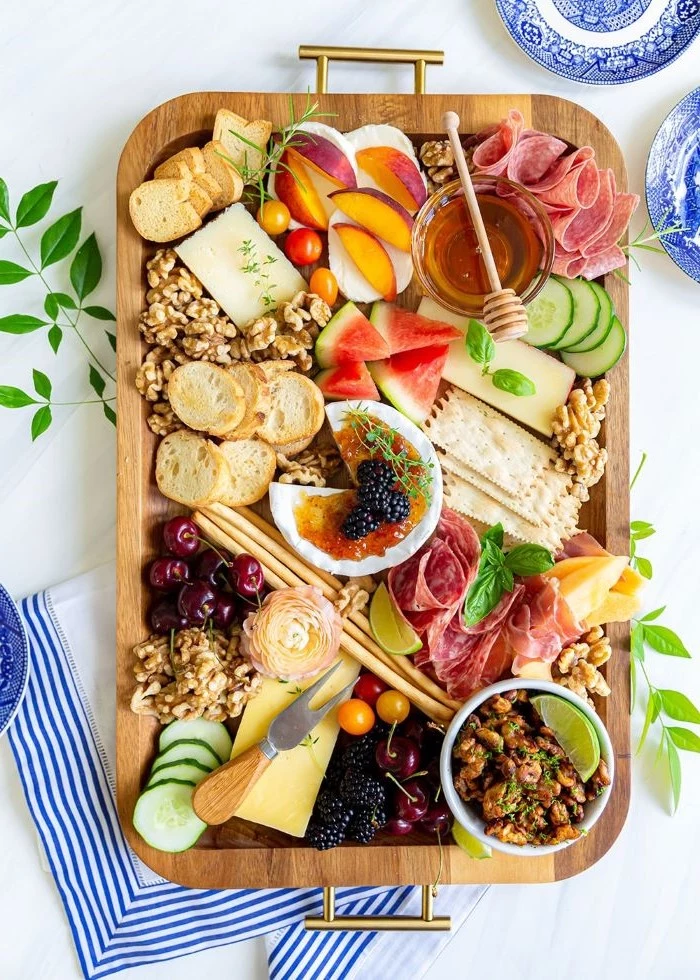
This isn’t about impressing people with complicated, stuffy rules. It’s about crafting a fun, shared experience around fantastic food. So, I’m going to share the practical, real-world knowledge I’ve picked up over the years. We’ll get into smart pairings, pro assembly tricks, and the crucial food safety stuff that we live by in the industry.
The Secret Formula: Why Some Boards Just Work
A killer charcuterie board is built on a few super simple principles. You’re aiming for harmony, where every single item on the board makes the others taste even better. Think of it like a system of checks and balances for your taste buds. Getting this part right is what separates a basic meat and cheese tray from something truly memorable.
It really boils down to three key interactions:
- Fat Needs Acid. This is the golden rule, honestly. The richness from a fatty meat like a buttery cured ham or a creamy brie coats your mouth. An acidic partner, like a sharp little pickle or a tart cherry, swoops in and cuts right through that richness. It’s like a reset button for your palate, getting you ready for the next bite. Without that acidic kick, a board can feel way too heavy.
- Salty Craves Sweet. There’s a reason this combo is a classic. All those salty cured meats and aged cheeses are practically begging for a sweet counterpart. The sweetness from a dollop of fig jam, a fresh grape, or a drizzle of honey perfectly balances out the saltiness, making both flavors pop.
- Soft vs. Crunchy. Texture is a huge deal! Imagine a board with only soft cheeses and meats… kind of boring, right? You absolutely need that satisfying crunch from a toasted almond, a crisp cracker, or a fresh apple slice. This variety is what keeps every bite interesting and fun.
Once you start thinking this way, your choices become so much more intentional. You’re not just grabbing random things you like; you’re building a team of flavors that work together.
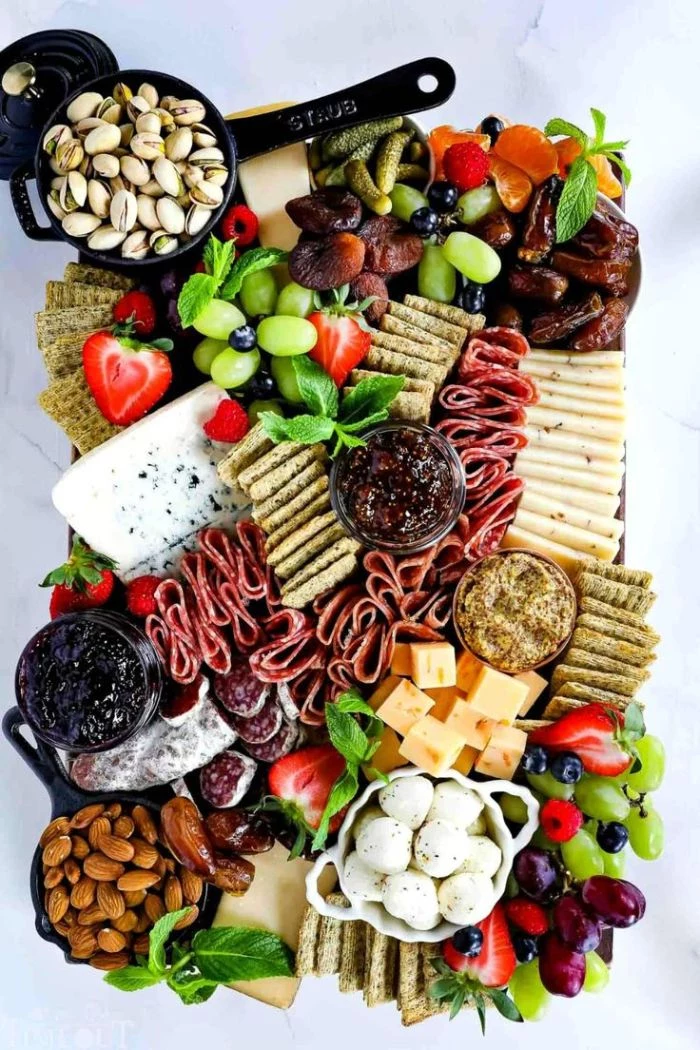
The Stars of the Show: Picking Your Meats & Cheeses
Let’s be clear: the quality of your meats and cheeses will make or break your board. This is where you should focus your budget. Trust me, one or two excellent products are way better than five or six mediocre ones. For a typical appetizer serving, I usually plan on about 2 ounces of meat and 2-3 ounces of cheese per person. This keeps waste down while making sure there’s plenty for everyone.
Oh, and speaking of budget, you don’t need to break the bank. For a solid starter board that’ll wow 4-6 guests, you can expect to pay around $40 to $60. A sample shopping list might look like this: Hard Salami ($8), Brie ($7), Aged Cheddar ($9), Crackers ($4), Fig Jam ($5), Grapes ($4), and Almonds ($6). Totally achievable!
Let’s Talk Meats
For a bit of variety, it’s a great idea to choose one item from at least two different categories.
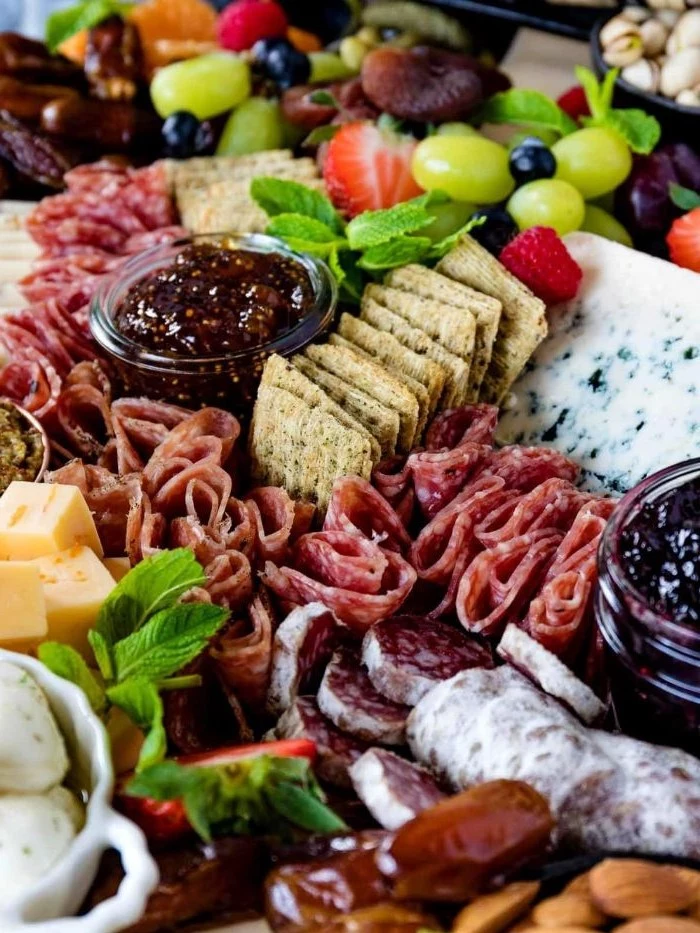
- Whole Muscle Cures: These are the delicate, melt-in-your-mouth types made from a whole, intact muscle that’s been salted and air-dried. Think of a classic, buttery Italian-style ham or a nuttier, deeper-flavored Spanish-style one. They should always be sliced paper-thin. There’s also a lean, air-dried beef with a unique, almost floral aroma that’s a fantastic choice.
- Cured Sausages: This is your salami family. It’s ground meat mixed with fat and spices, cured, and full of flavor. A firm, fennel-spiced salami offers a great chew. A spicy, paprika-heavy cured sausage brings a little heat and beautiful color. Or you can go with a classic, coarse-ground salami—it’s always a crowd-pleaser.
- Cooked & Spreadable Meats: This includes things like pâtés and terrines. A rustic country-style pâté adds a completely different, spreadable texture to the board. It’s less common for home boards, but a small slice shows you know your stuff and pairs amazingly with a sharp mustard and those tiny pickles.
Quick tip: Ask the person at the deli counter to slice whole muscle cures like prosciutto as thinly as humanly possible—almost see-through is perfect. For hard salami, a slice about the thickness of a quarter is the sweet spot.
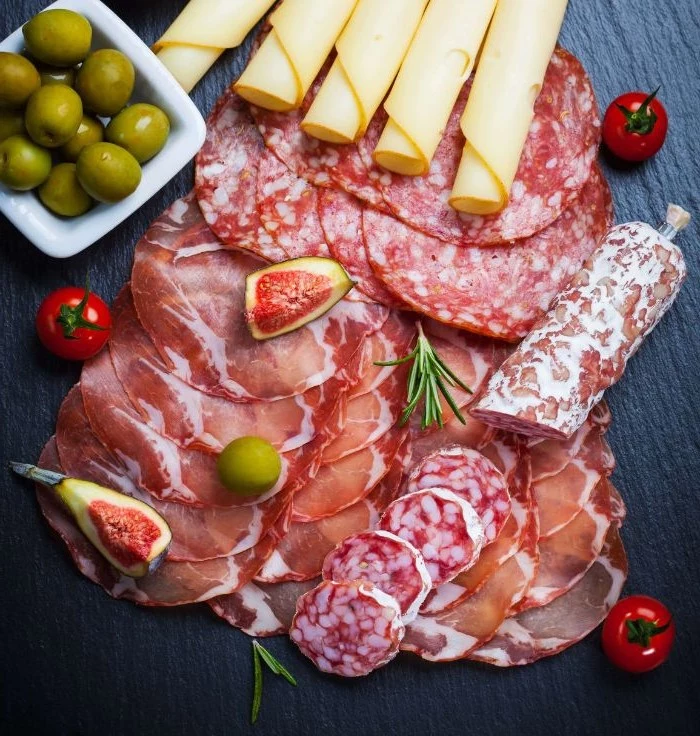
Choosing Your Cheeses
Good cheese is alive, and its flavor changes as it warms up. So here’s a crucial tip: always pull your cheeses out of the fridge 30 to 60 minutes before serving. A cold cheese is like a quiet person at a party; its real personality and flavor only come out when it warms up a bit! Serving it ice-cold is a rookie mistake that kills its character.
For a balanced board, I recommend picking three or four cheeses with different textures and milk types:
- Hard: These are aged cheeses with intense, often nutty or salty flavors. Think of an aged English-style cheddar or a firm, nutty sheep’s milk cheese. They’re great for breaking into rustic chunks.
- Firm: These are your all-around crowd-pleasers. A nutty and slightly sweet Alpine-style cheese or a simple Gouda are perfect examples. They slice beautifully and everyone loves them.
- Soft and Creamy: This is where the luxury comes in. A double or triple-crème brie is a must-have. A fresh, tangy goat cheese is also fantastic, especially when drizzled with a little honey.
- Blue: A blue cheese adds a bold, funky element. It’s not for everyone, but it deserves a spot. A milder, creamier Italian-style blue is a great entry point. For the more adventurous, a sharp and salty French-style blue or an earthy English one is incredible. A small wedge is all you need.
By the way, you can find surprisingly good and affordable cheeses at places like Trader Joe’s and Aldi. But for a special occasion, swinging by a real cheesemonger is a treat. They’ll let you try samples and share the story behind each cheese, which is part of the fun.
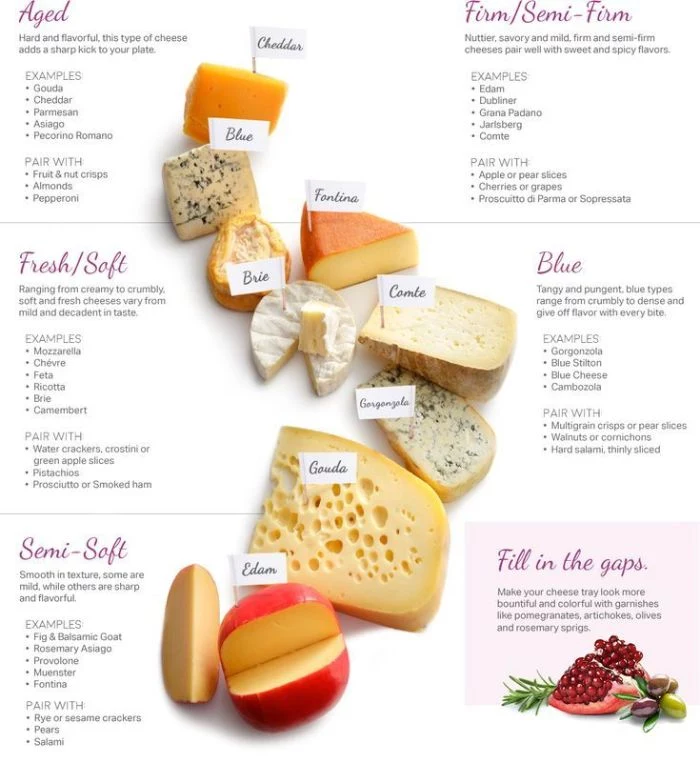
The Supporting Cast: Don’t Forget the Extras!
A board with just meat and cheese is, well, incomplete. The accompaniments are what bring the whole experience to life, providing those sweet, acidic, and crunchy notes we talked about.
- The Vehicles (Breads & Crackers): Their job is to carry the other flavors without getting in the way. I strongly advise against heavily herbed or spiced crackers—they just compete with the cheese. A fresh, sliced baguette is perfect. You can also toast the slices (crostini) with a little olive oil for extra crunch. Simple water crackers, oat crackers, or crispy breadsticks are also excellent choices.
- The Sweet Stuff (Fruits & Spreads): Sweetness is all about balance. I like to have both fresh and dried options. For fresh, go with what’s in season—grapes, figs, and pear slices are classics. For dried, things like apricots and dates offer a chewy, intense sweetness. A small bowl of fig jam is a universal winner, and a drizzle of quality honey over goat cheese or blue cheese is pure magic.
- The Bite (Pickles & Olives): These acidic items are non-negotiable for cutting through all that rich fat. Tiny, sharp French-style pickles (cornichons) are my absolute favorite. A mix of olives adds a briny, salty punch. A good, grainy mustard is also a must-have if you’re serving any kind of pâté.
- The Crunch (Nuts): Nuts add that final, satisfying layer of texture. Spanish-style Marcona almonds, often fried in olive oil, are amazing. Lightly toasting some walnuts or pecans in a dry pan for a few minutes makes them incredibly fragrant and crunchy. Plus, pistachios add a beautiful pop of green.
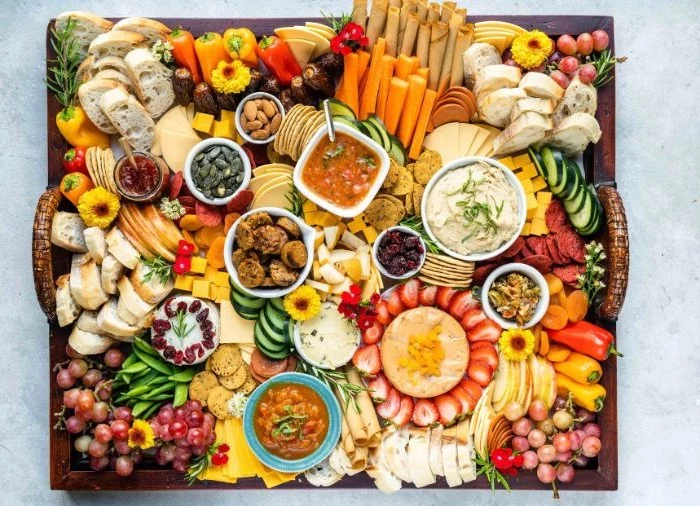
Putting It All Together: How to Build a Board Like a Pro
Presentation absolutely matters. We eat with our eyes first, and a well-built board looks generous, exciting, and inviting. Honestly, once you have your ingredients, the actual assembly is pretty quick—plan for about 20-30 minutes of creative fun.
Step 1: Choose Your Canvas. A big wooden board is classic. Slate or marble can look very dramatic. But no fancy board? No problem! A large dinner platter, a clean baking sheet, or even a piece of parchment paper laid right on the table can look amazing and rustic.
Step 2: Place Your Anchors. Before any food goes down, place your small bowls for things like olives, jams, or mustard. Scatter them around the board to create some structure. These are your anchors.
Step 3: Position the Cheeses. Next, place the cheeses, spacing them far apart in a rough triangle. This gives each cheese its own little zone. And please, provide a separate knife for each cheese, especially the soft and blue ones!
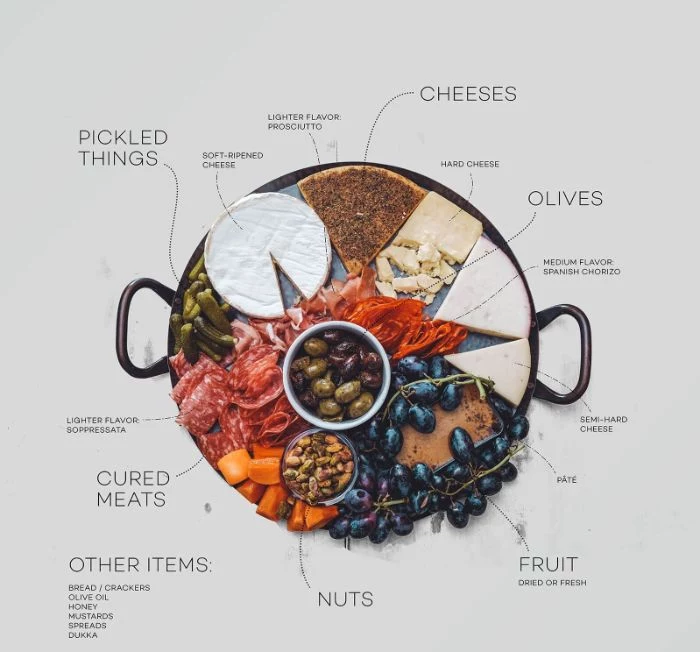
Step 4: Get Creative with the Meats. Don’t just lay slices flat. Create some movement! For thin slices like prosciutto, gently fold them into loose, fluffy piles. For salami, you can fan the slices out in a winding ‘river’ that flows between the cheeses. Want to really impress? Make a salami rose! It’s super easy: just grab a small wine glass, fold salami slices over the rim, overlapping as you go. Add a second, tighter layer inside the first. Then, gently flip the glass over onto the board and lift it away. Boom!
Step 5: Add the Crackers and Bread. Fan out crackers in a few different spots so guests can easily grab them from any side of the board. I like to nestle them in a few different places for easy access.
Step 6: Fill Every Single Gap. This is the secret that makes a board look lush and abundant. Take handfuls of grapes, nuts, and dried fruit and use them to fill every last empty space. A sparse board looks sad; a full one looks like a feast.
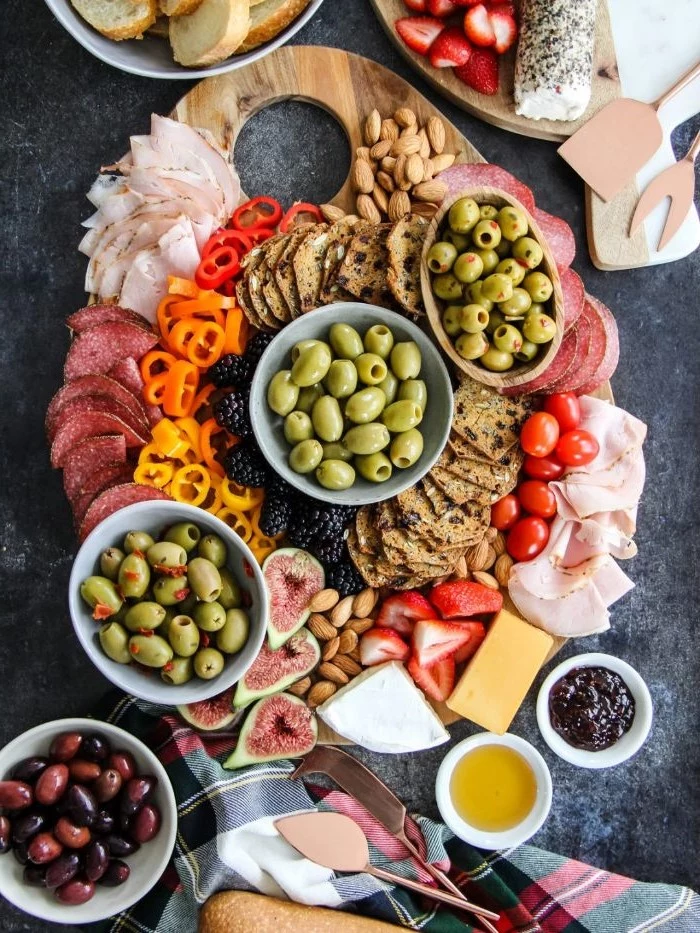
Step 7: The Final Touch. A few sprigs of fresh rosemary or thyme add a touch of green and a lovely scent. They’re just for looks, but they really complete the picture.
Quick Fixes & Pro Tips
Once you get the hang of it, you’ll be a pro. But here are a few common issues and how to solve them.
- Problem: My board looks empty and sad.
Solution: You either picked a board that’s too big or you didn’t fill the gaps! The key is density. Use smaller items like nuts, berries, and small clusters of grapes to fill every nook and cranny. You should see very little of the actual board surface. - Problem: The meats and cheeses are getting sweaty.
Solution: You put it out too early in a warm room. The best bet is to assemble the board, cover it lightly, and pop it in the fridge. Pull it out about 30 minutes before guests show up. - Problem: What do I do with the leftovers?
Solution: Aah, the classic question. Wrap leftover cheeses individually in wax or parchment paper—never plastic wrap, as it suffocates them and they can get slimy. Store leftover meats in a separate airtight container. Both will keep in the fridge for a few days.
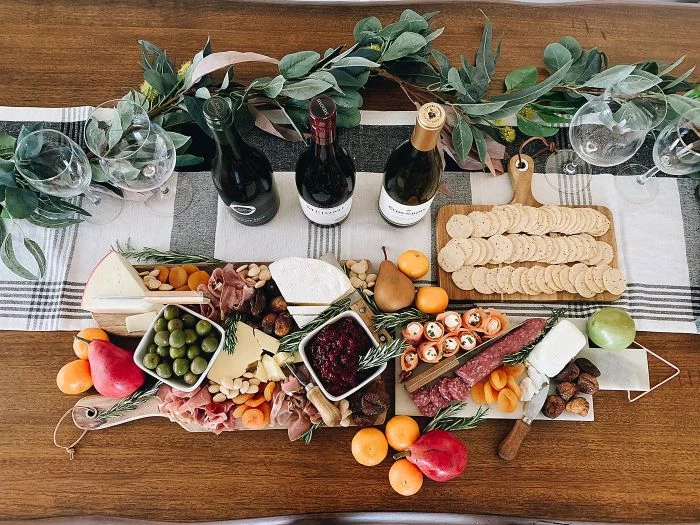
A Quick Word on Safety (The Non-Negotiable Part)
In the professional food world, we live by one critical rule: time and temperature. Perishable foods like meats and soft cheeses should not sit at room temperature for more than two hours. If it’s a hot day (over 90°F), that window shrinks to just one hour. After that, you’re entering the danger zone for bacteria growth. For a long party, just put out a smaller board and replenish it, or have a plan to get it back in the fridge.
Heads up on allergies, too. Since nuts are a common allergen, I often put them all in a separate bowl instead of scattering them all over, just to be safe. It’s a small step that can make a big difference.
Building a beautiful board is a skill that just gets better with practice. Start small, try a new cheese, and see what you like. Just remember the core principles, respect the ingredients, and most of all, have fun with it. It’s one of the best ways to bring people together.
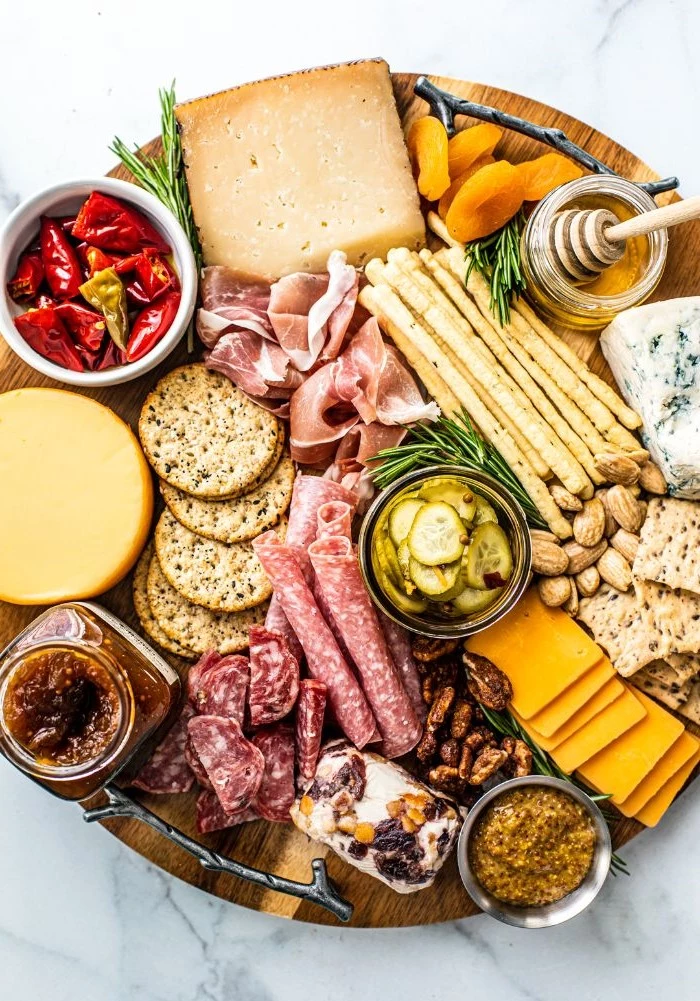
Inspirational Gallery
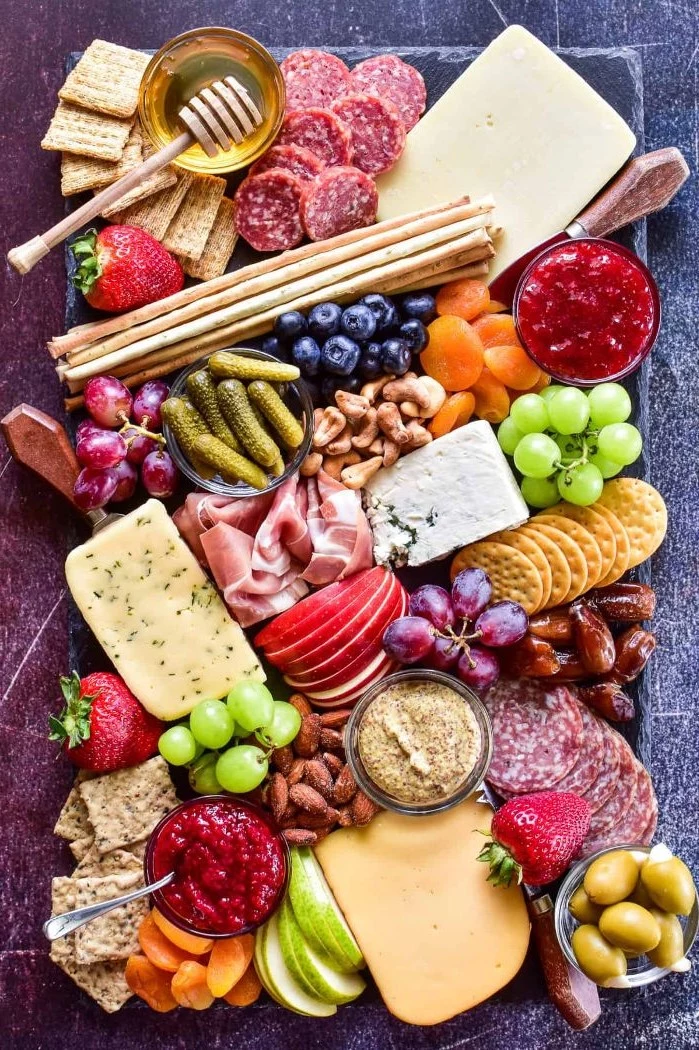
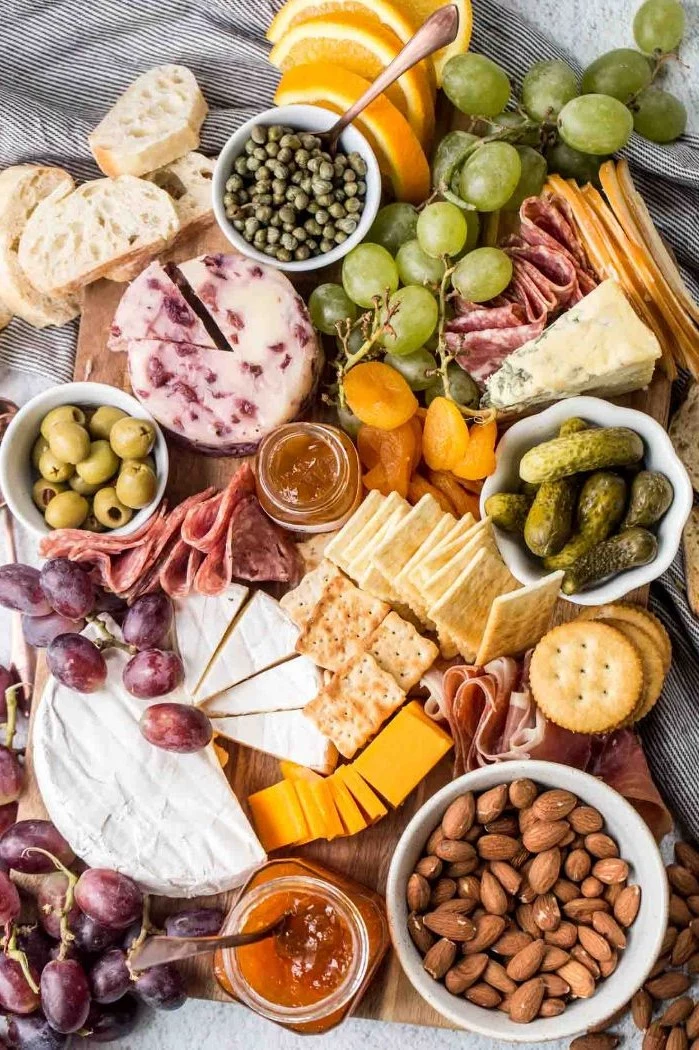
- Creates a stunning visual flow.
- Makes it easy for guests to grab slices.
- Adds a touch of professional flair.
The secret? The ‘salami river.’ Fold slices of salami or soppressata in half, then in half again to form a ‘rosebud.’ Line them up, slightly overlapping, to meander across your board, creating a delicious focal point.
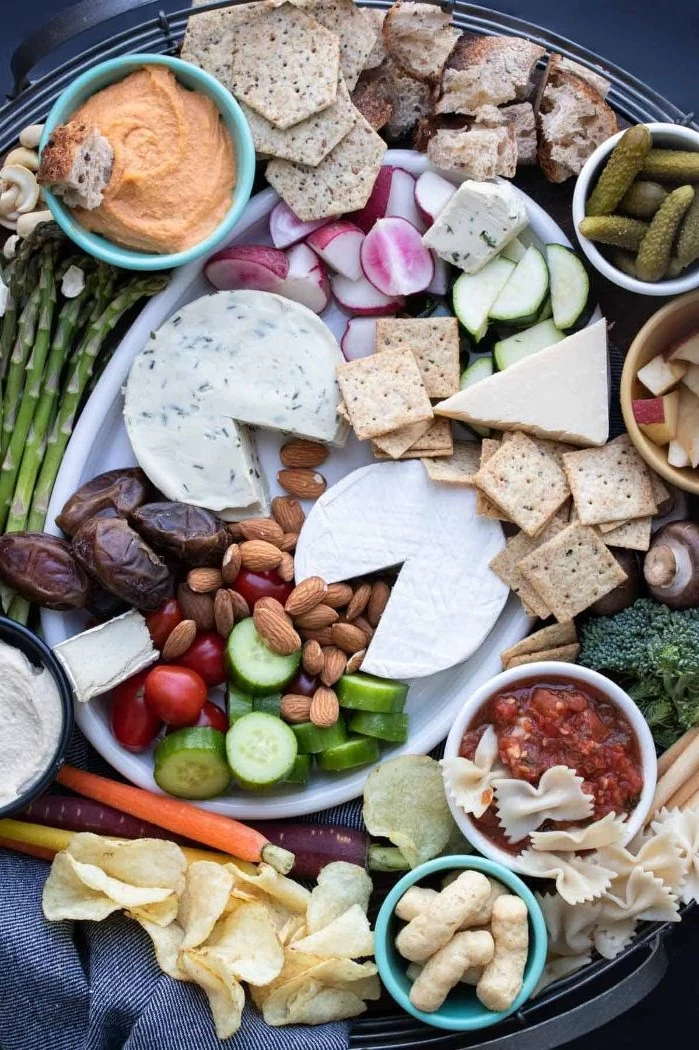
The Golden Hour for Cheese: For maximum flavor, pull your cheeses out of the refrigerator about 30-60 minutes before serving. A cold cheese has a muted taste and a firm, uninviting texture. Allowing it to come to room temperature lets the complex fats and aromas bloom, transforming a simple piece of cheddar or brie into a rich, nuanced experience.
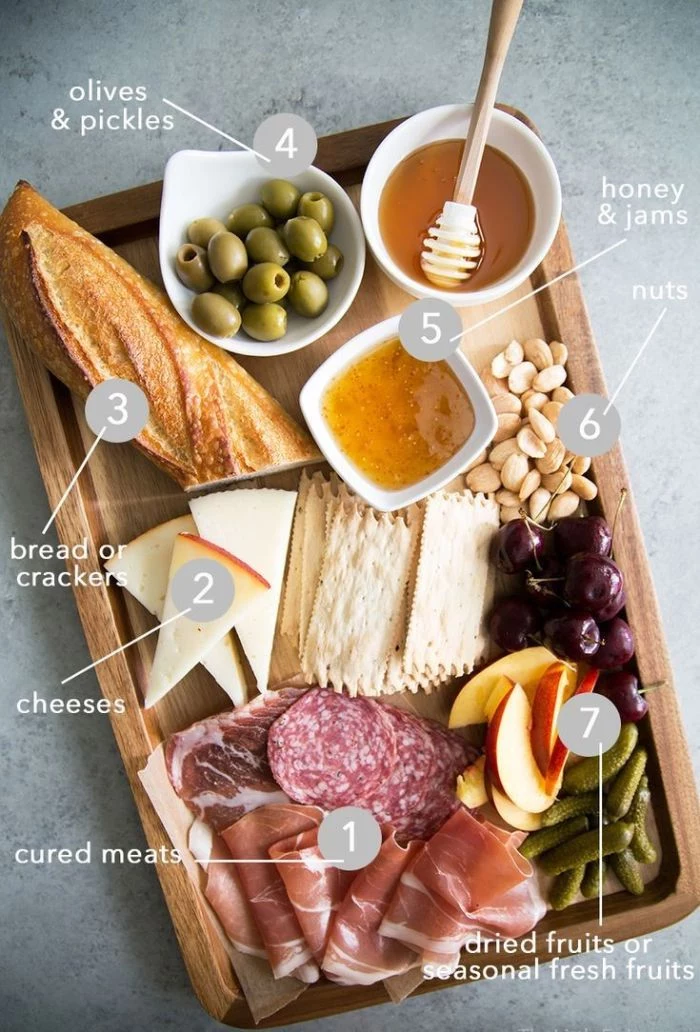
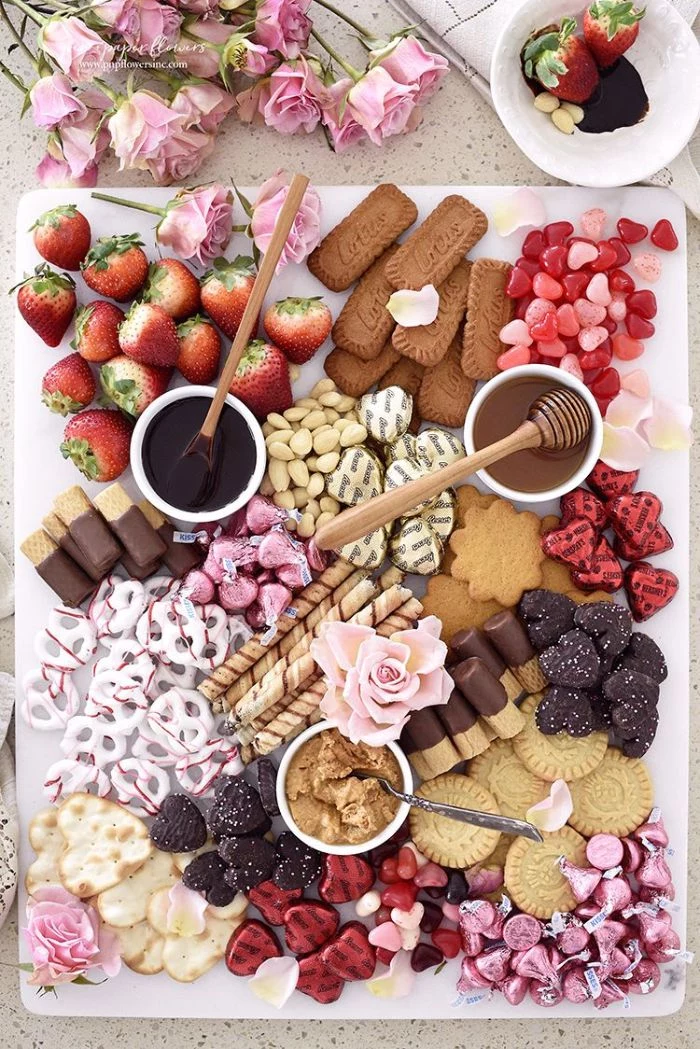
The term ‘charcuterie’ comes from the French words for flesh (‘chair’) and cooked (‘cuit’). It originated in 15th-century France as a way for shops to sell preserved pork products, from pâtés to sausages, long before the age of refrigeration.
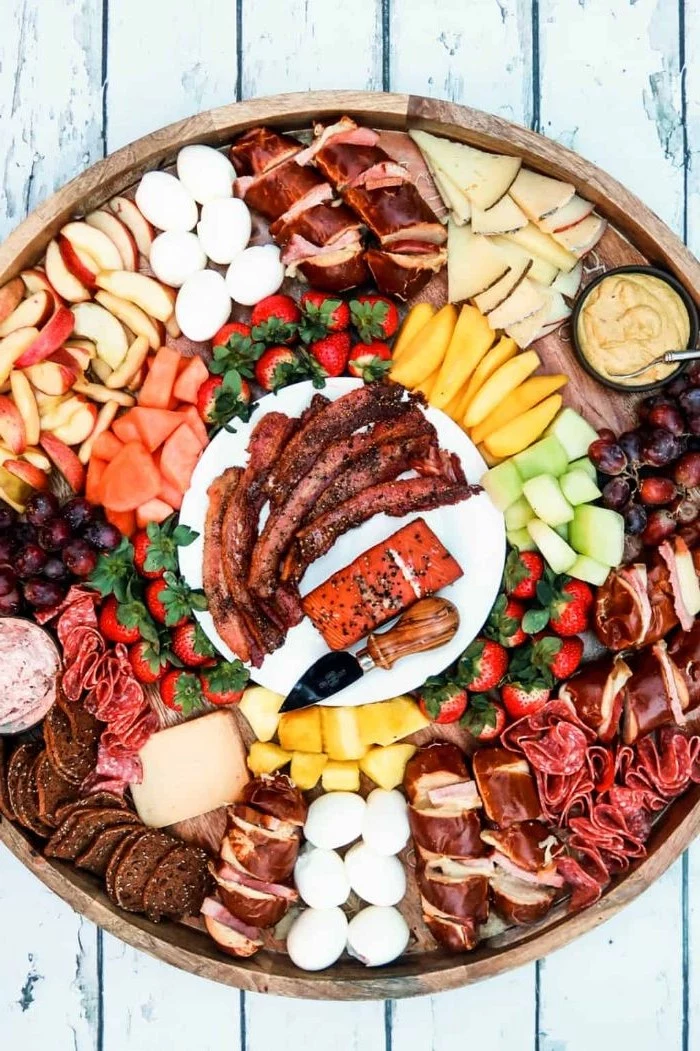
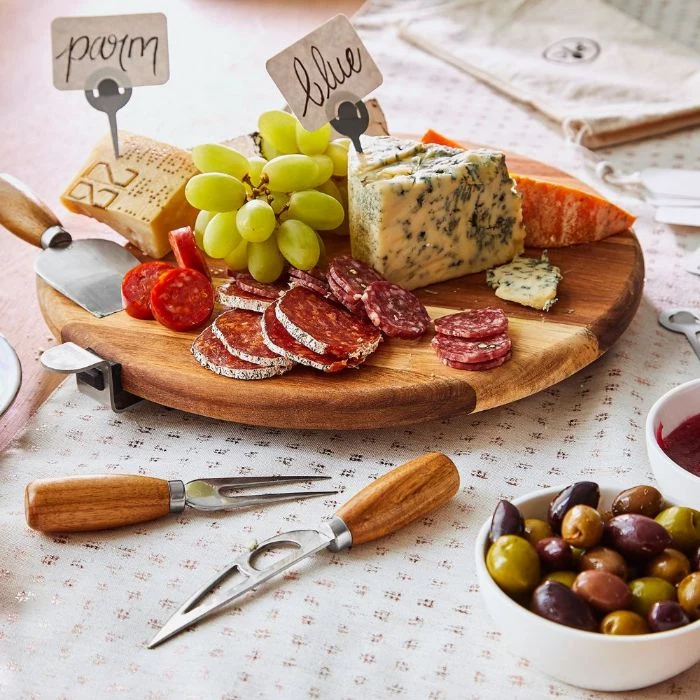
When choosing accompaniments, think beyond the usual grape. Dried apricots provide a chewy, tart counterpoint to salty cured meats. Fresh figs, when in season, are luxuriously sweet and pair beautifully with creamy cheeses like goat cheese or gorgonzola. For a pop of color and acidity, consider pomegranate seeds or sliced starfruit.
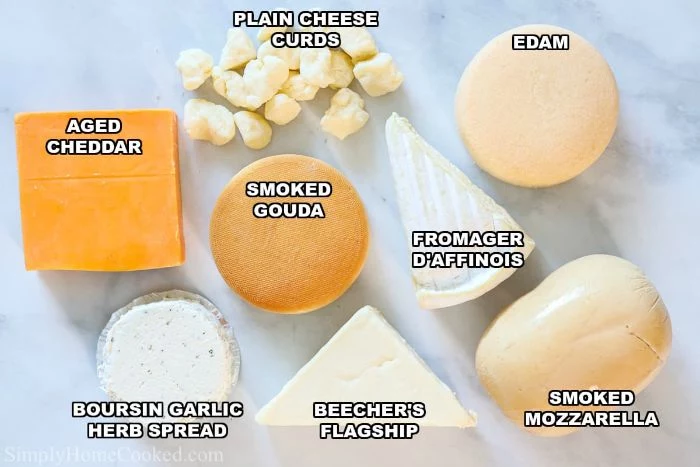
How much food do I actually need per person?
For an appetizer portion, plan on 2 ounces (about 60g) of cheese and 2 ounces of meat per guest. If the board is the main meal, double that to 4-5 ounces of each. It’s always better to have a little extra than to run out halfway through the party!
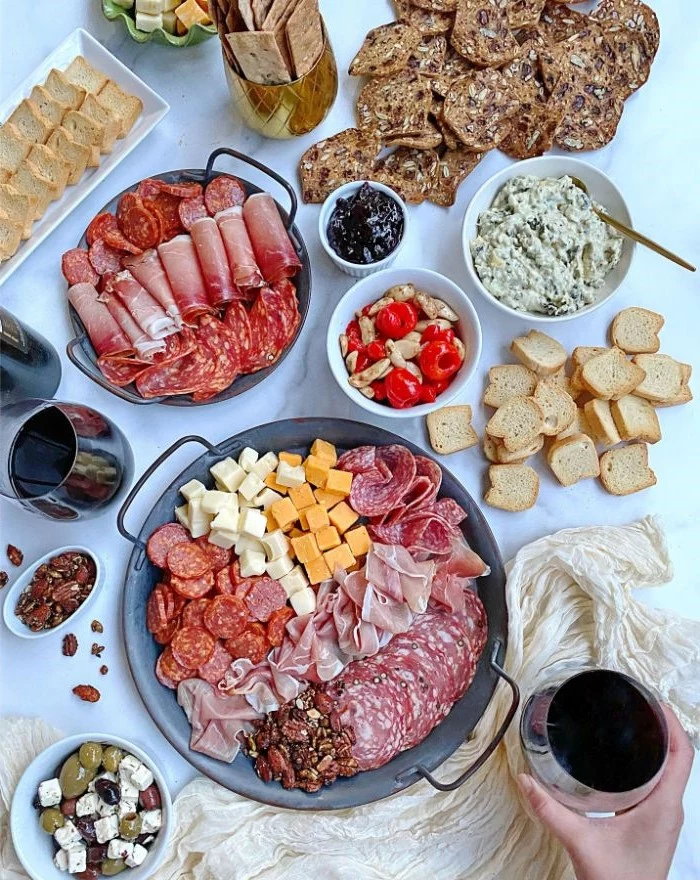
Wooden Board: The classic choice. Acacia or olive wood offers beautiful grain and natural antibacterial properties. It’s warm, rustic, and ideal for most spreads. Remember to oil it occasionally with food-grade mineral oil to prevent cracking.
Slate or Marble Slab: A modern, chic alternative. Its naturally cool surface is excellent for keeping cheeses firm on a warm day. The dark background makes colors pop, but be mindful that acidic foods like pickles can sometimes stain the surface.
Both are fantastic choices; let the desired mood of your event guide you.
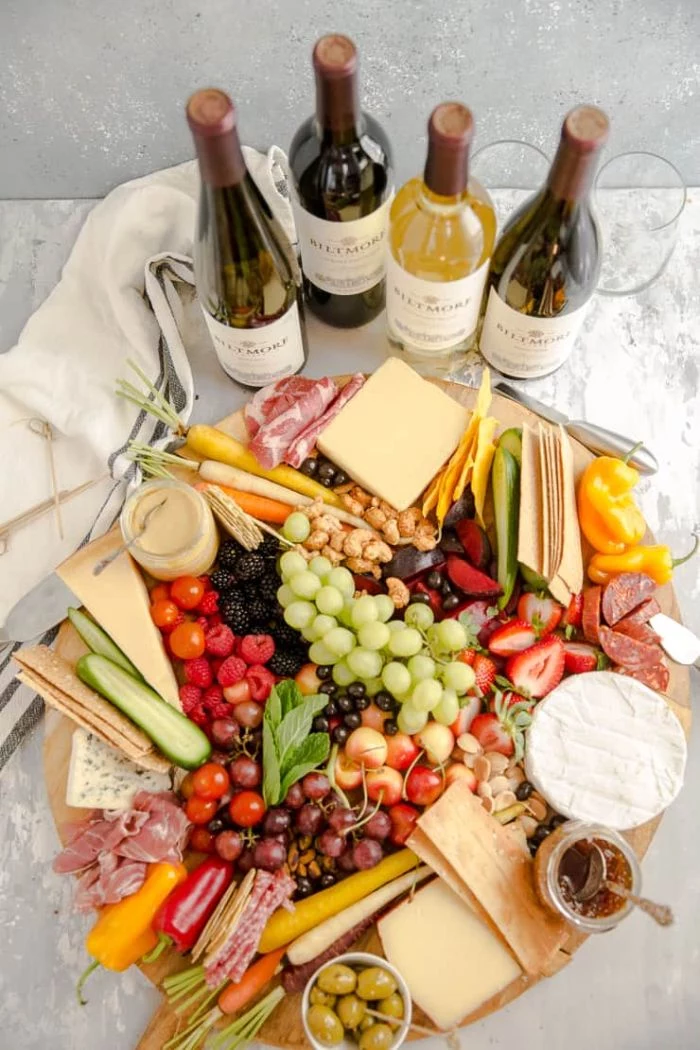
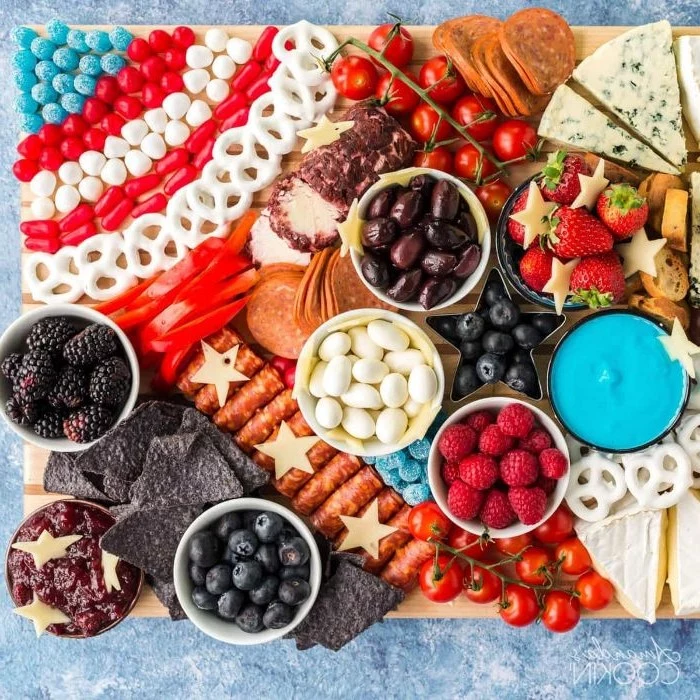
Don’t neglect the power of a good mustard. While Dijon is a classic, explore the world of whole-grain mustards for texture or a spicy German mustard for a kick. A dollop of fig jam, like the one from Stonewall Kitchen, is a non-negotiable for aged cheddars and prosciutto. For a surprising twist, try a hot pepper jelly with cream cheese.
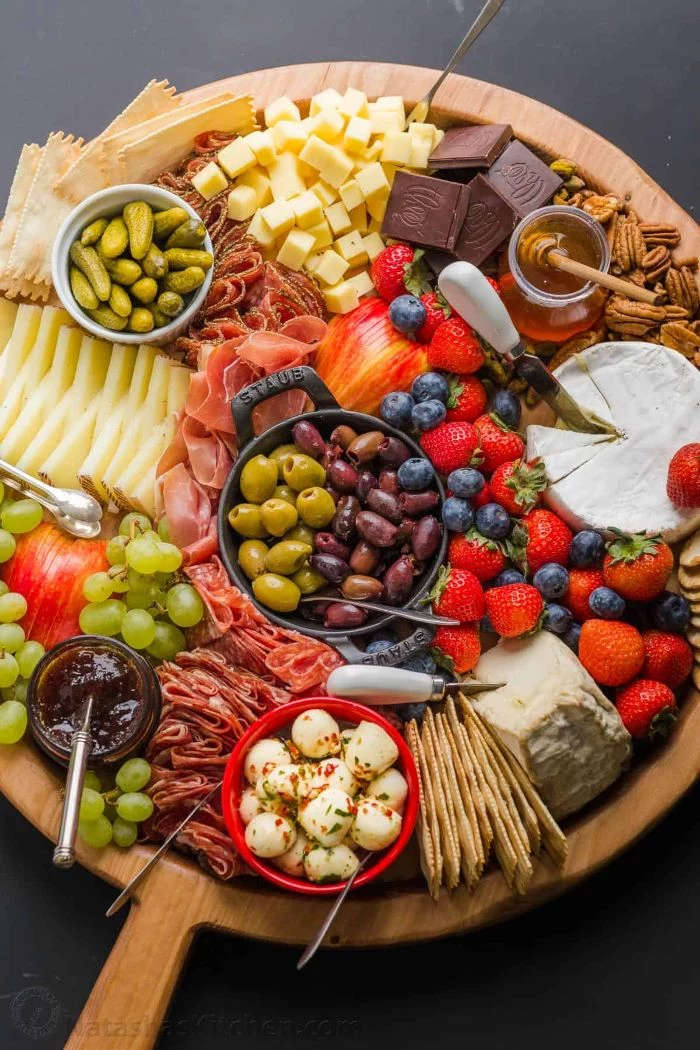
- A good set of cheese knives: One for hard cheeses (a spade or chisel), one for soft (a spreader), and one for crumbly (a fork-tipped knife).
- Small bowls or ramekins: Essential for containing wet items like olives, jams, and pickles. They prevent soggy crackers and keep the board tidy.
- Miniature tongs or forks: For hygienic serving, especially in a group setting.
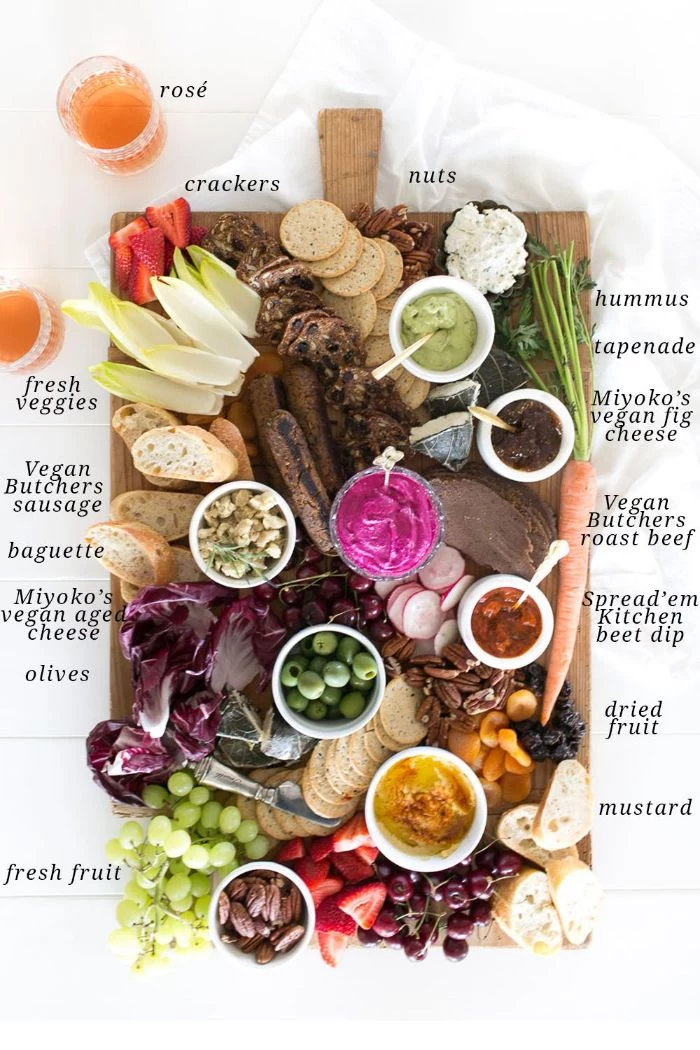
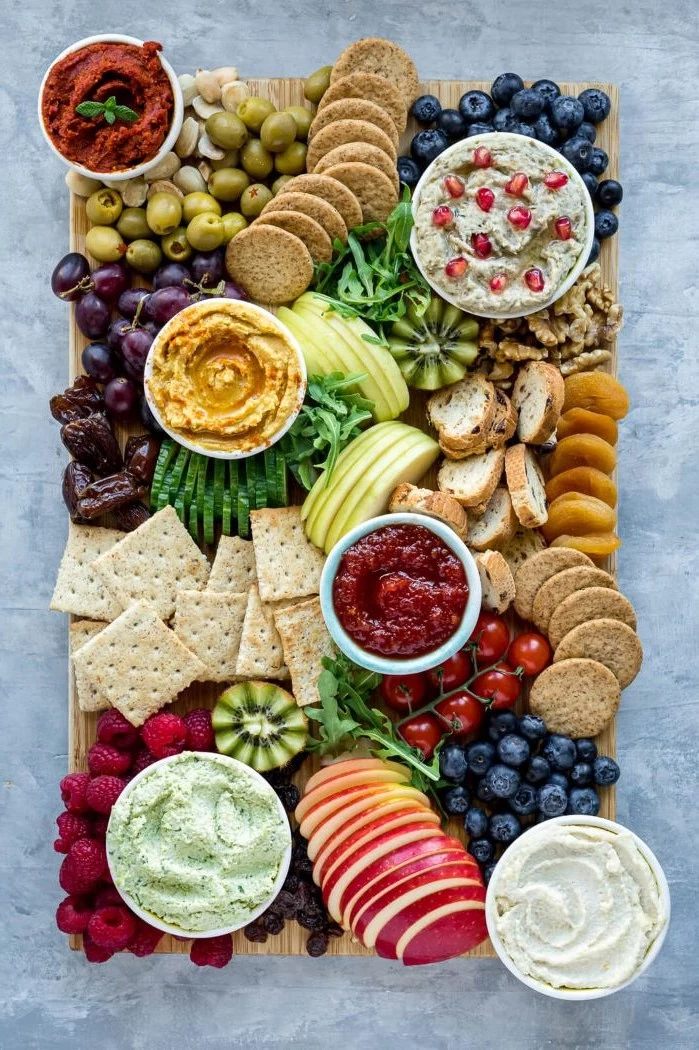
A 2021 study revealed that the average American household throws out 31.9% of the food it buys.
Your charcuterie board doesn’t have to contribute. Leftover meats and hard cheeses are perfect for a gourmet omelet or frittata the next morning. Extra jams and fruits can be swirled into yogurt, and leftover nuts and olives can be chopped and tossed into a salad for lunch.
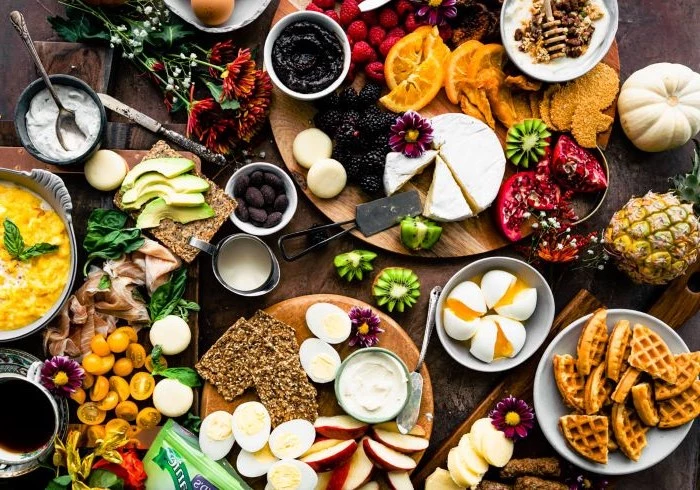
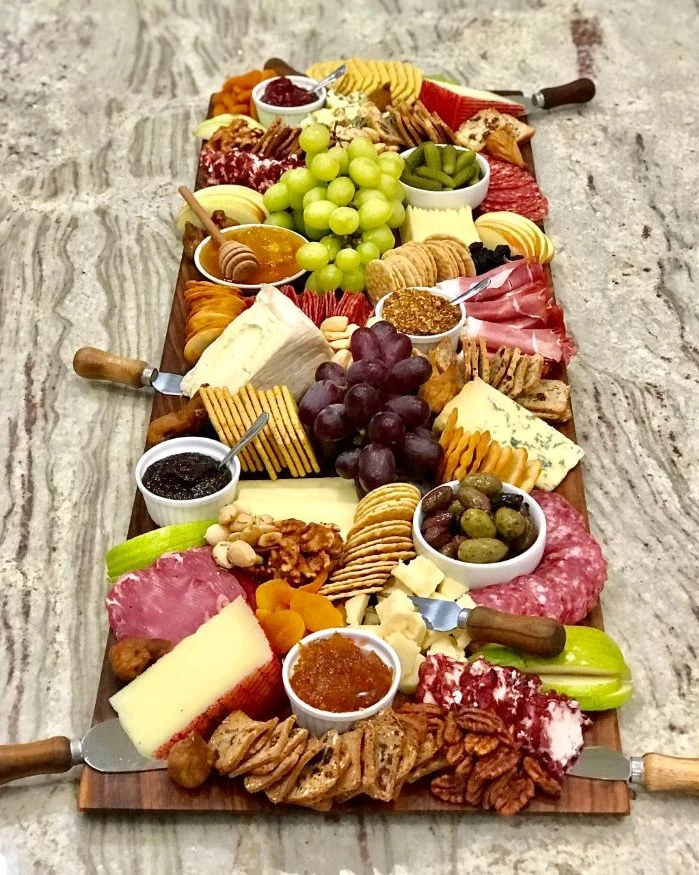
Think beyond a flat landscape. Creating height adds visual drama and makes your board look more abundant. Use a small pedestal to elevate a wheel of brie, or stand breadsticks and long, artisanal crackers (like La Panzanella) upright in a short, heavy glass. This simple trick draws the eye and makes the spread feel more dynamic.
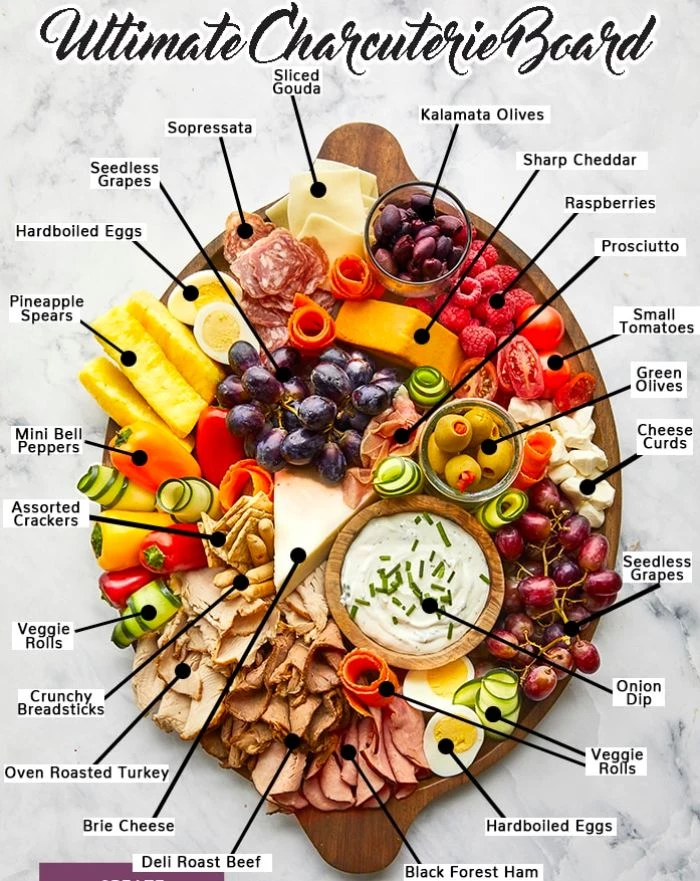
Italian Antipasto Theme: Focus on Prosciutto di Parma, soppressata, and fresh mozzarella balls (bocconcini). Add marinated artichoke hearts, roasted red peppers, and a variety of olives. Serve with crusty ciabatta bread.
Spanish Tapas Board: Feature slices of spicy chorizo, salty Manchego cheese, and Jamón Serrano. Complement with Marcona almonds, quince paste (membrillo), and garlic-stuffed olives.
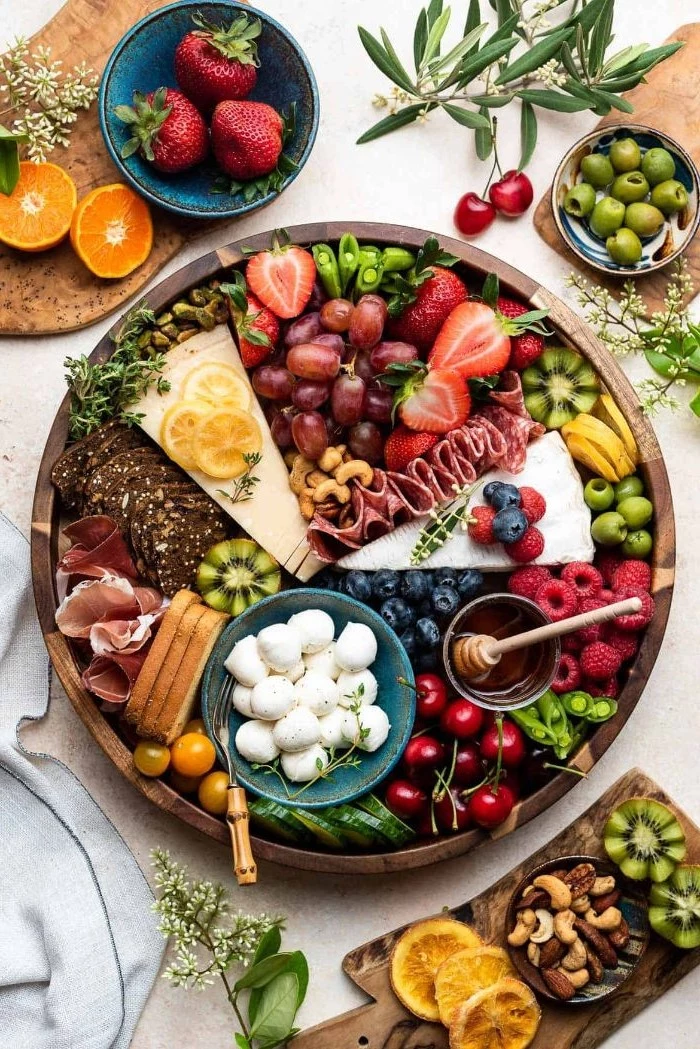
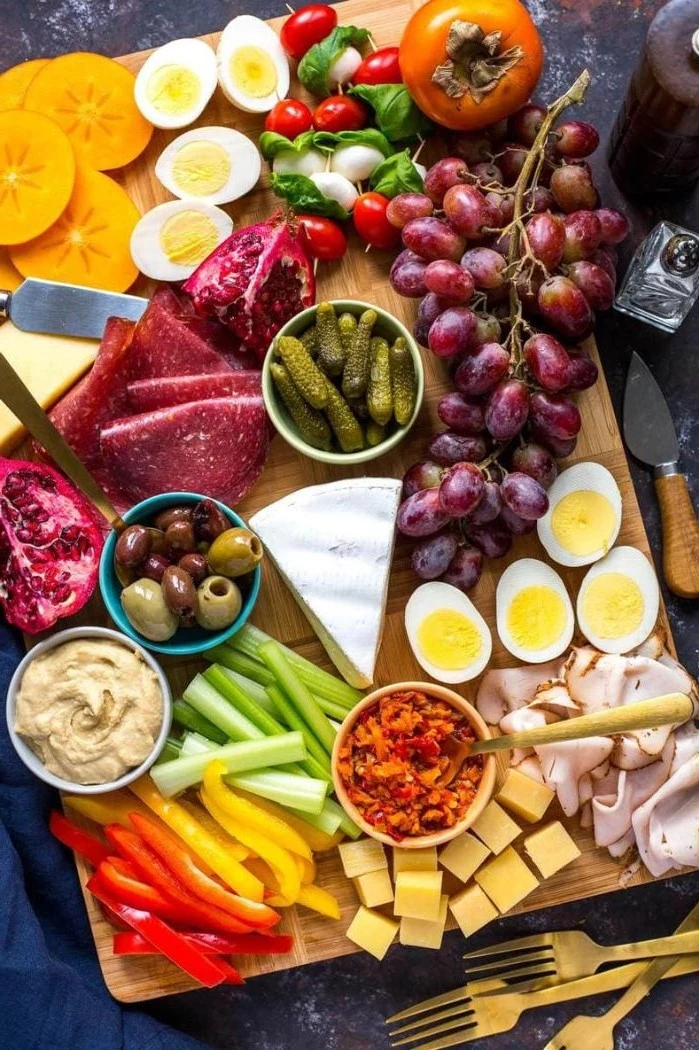
One of the biggest mistakes is pre-slicing everything. While you should slice hard meats and some hard cheeses for convenience, leave soft cheeses like brie or camembert whole. This prevents them from drying out and allows guests to cut their own desired portion. It also looks much more inviting and generous on the board.
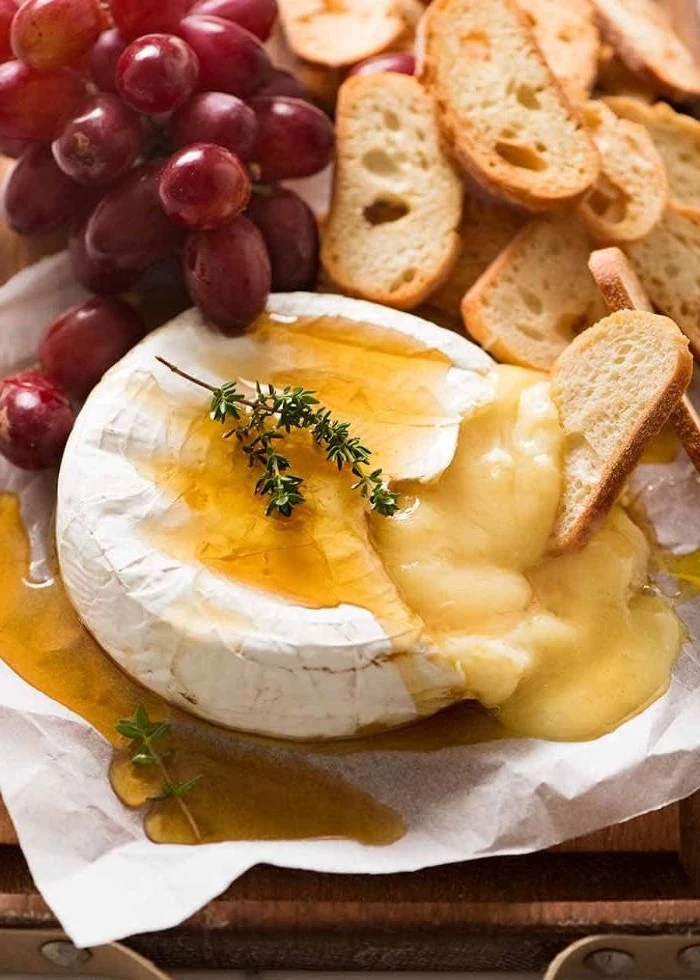
- For Gluten-Free Guests: Offer a dedicated section with high-quality gluten-free crackers. Brands like Simple Mills (made from almond flour) or Mary’s Gone Crackers (made with seeds) are sturdy and delicious. Rice crackers are another excellent option.
- For Nut Allergies: Keep nuts in a separate bowl, or omit them entirely. Roasted chickpeas or pumpkin seeds (pepitas) can provide a similar crunch without the risk.
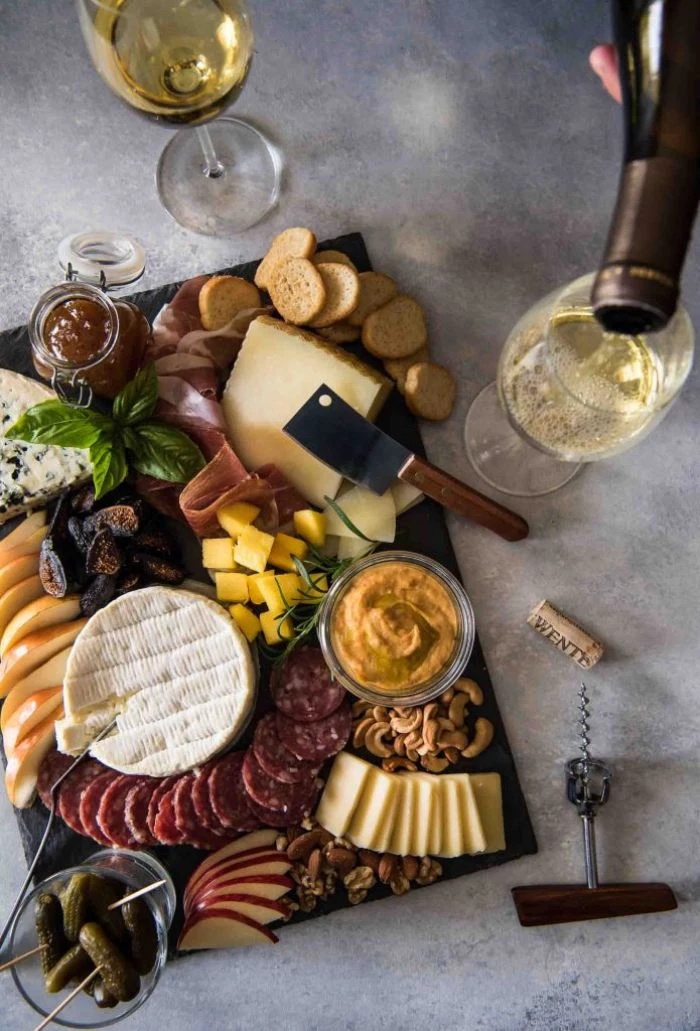
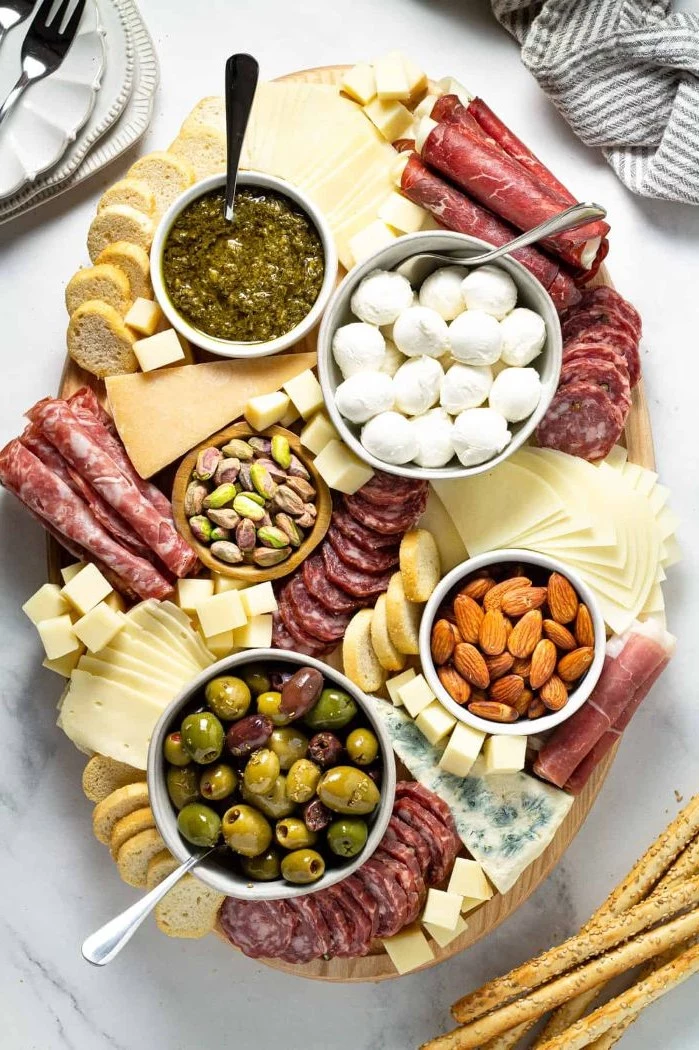
Give your board a fresh, fragrant finish with herbs. A few sprigs of fresh rosemary tucked between cheeses or a scattering of thyme leaves not only adds a lovely aroma but also introduces a beautiful, natural green that breaks up the rich tones of the meats and cheeses. It’s a simple detail that signals care and attention.
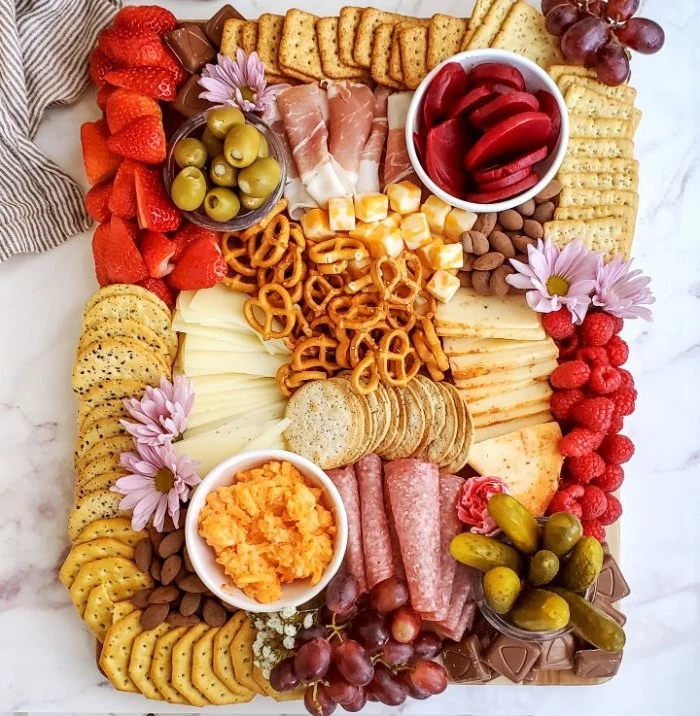
You can absolutely do some prep ahead! Chop your veggies and slice hard meats and cheeses a day in advance, storing them in separate airtight containers in the fridge. You can also portion out your jams and pickles into their serving bowls. However, wait until just before your guests arrive to assemble the board to ensure crackers stay crisp and cheeses are at their best.
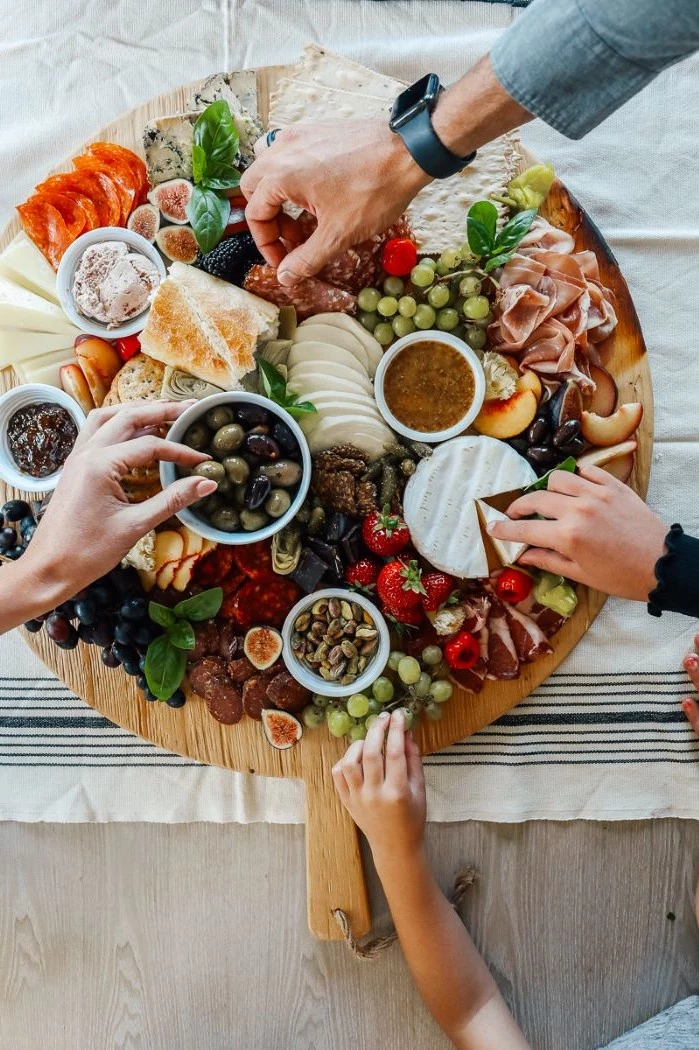
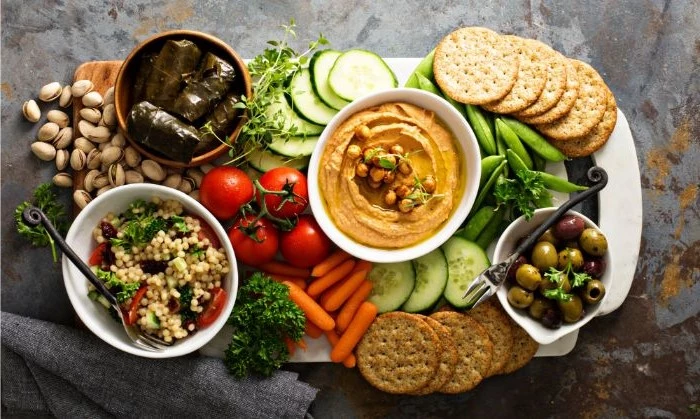
Prosciutto di Parma: An Italian classic, this ham is cured with only sea salt. The result is a delicate, silky texture and a subtly sweet, nutty flavor that melts in your mouth.
Jamón Serrano: Hailing from Spain, this ham is also dry-cured but often has a deeper red color and a more robust, saltier flavor profile with less moisture.
For a creamy, milder experience, choose Prosciutto. For a bolder, more savory bite, go with Serrano.
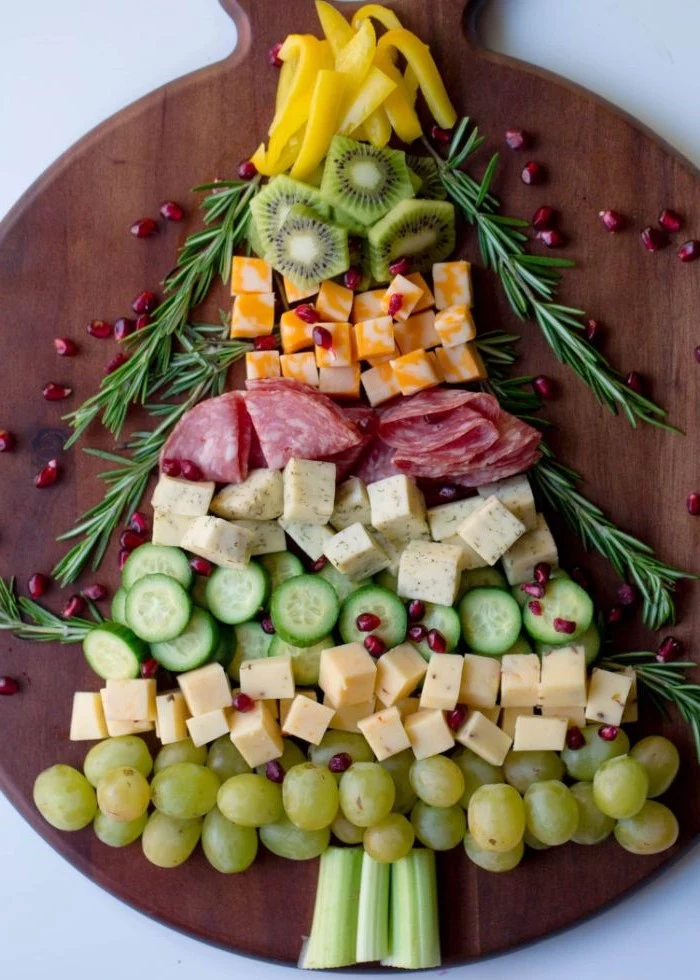
Don’t be afraid to embrace a little DIY. Elevate simple store-bought nuts in minutes. Toss a cup of Marcona almonds or pecans with a tablespoon of olive oil, a teaspoon of chopped fresh rosemary, a pinch of sea salt, and a dash of cayenne pepper. Roast at 350°F (175°C) for 5-7 minutes until fragrant. They’ll make your kitchen smell amazing and add a gourmet touch to your board.
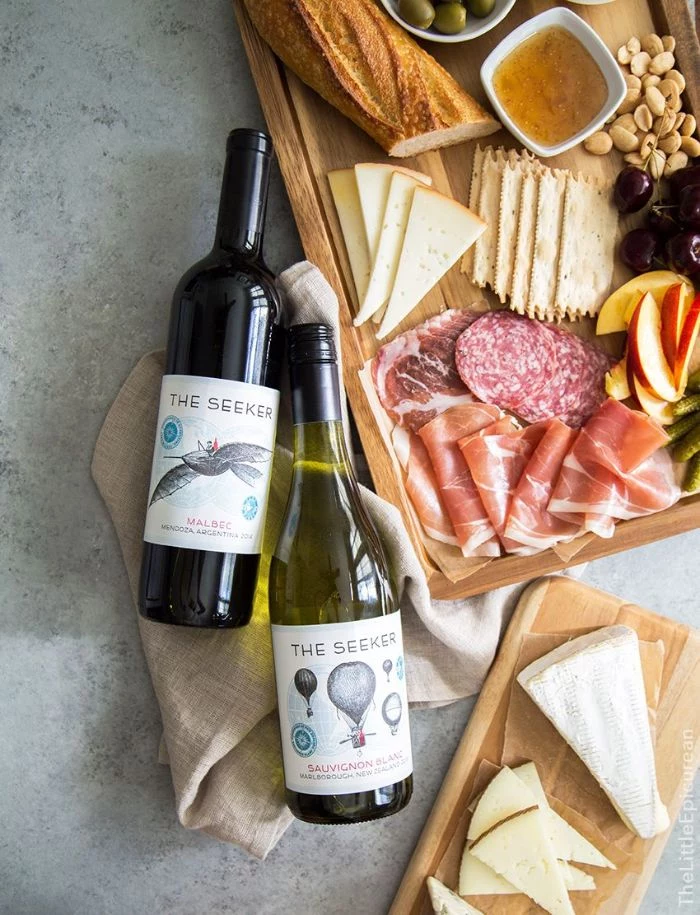
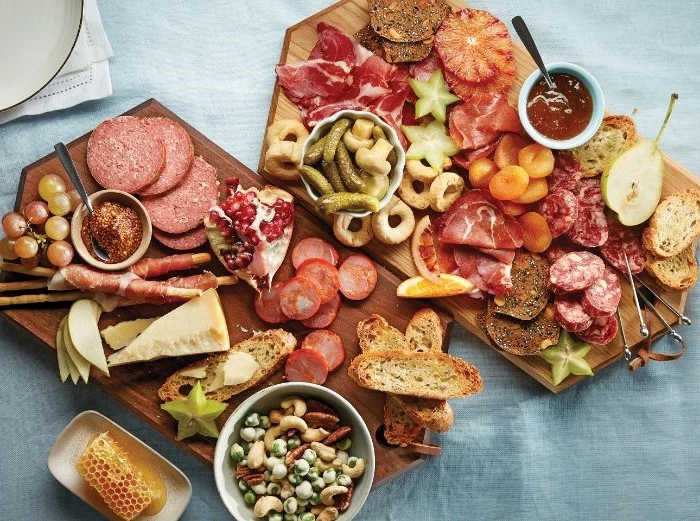
While a bold Cabernet might overpower delicate cheeses, a highly acidic Sauvignon Blanc can clash with cured meats. When in doubt, choose a versatile, crowd-pleasing wine. A dry Rosé from Provence, with its notes of red fruit and crisp acidity, is a nearly perfect partner. A light-bodied, low-tannin red like a Pinot Noir or Gamay also works beautifully, complementing rather than competing with the diverse flavors.
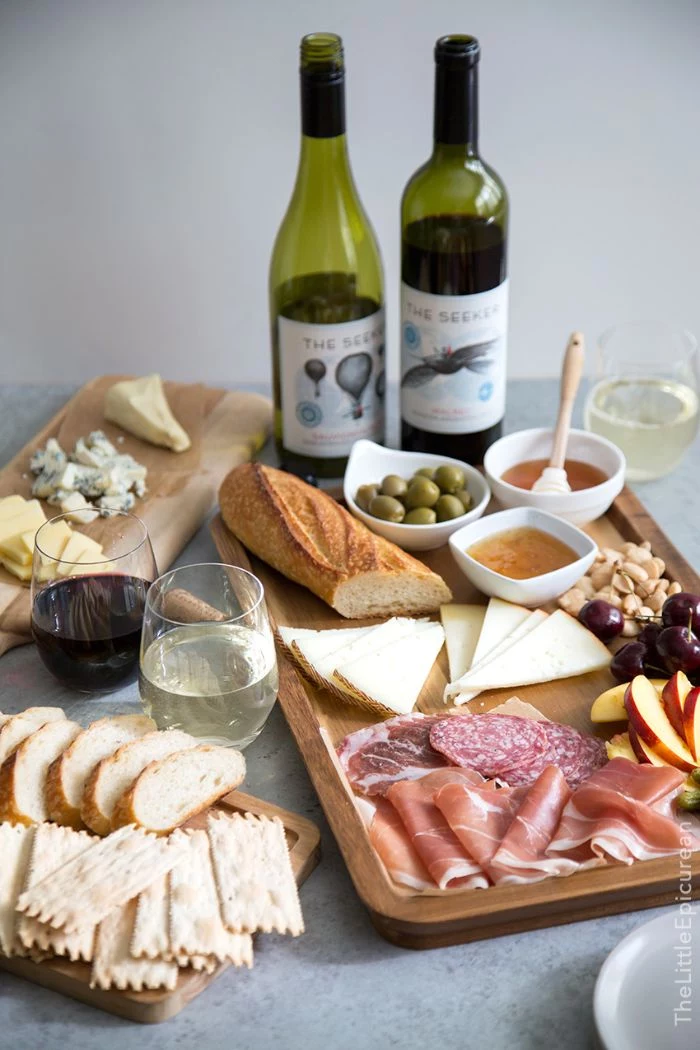
- A cohesive, elegant look.
- Protection for your main board.
- An easy way to manage messy or liquid items.
The secret is a smart use of ramekins and small dishes. Placing olives, cornichons, honey, and jams in their own containers prevents their juices and oils from making your crackers soggy. It also adds dimension and makes replenishing items a breeze.
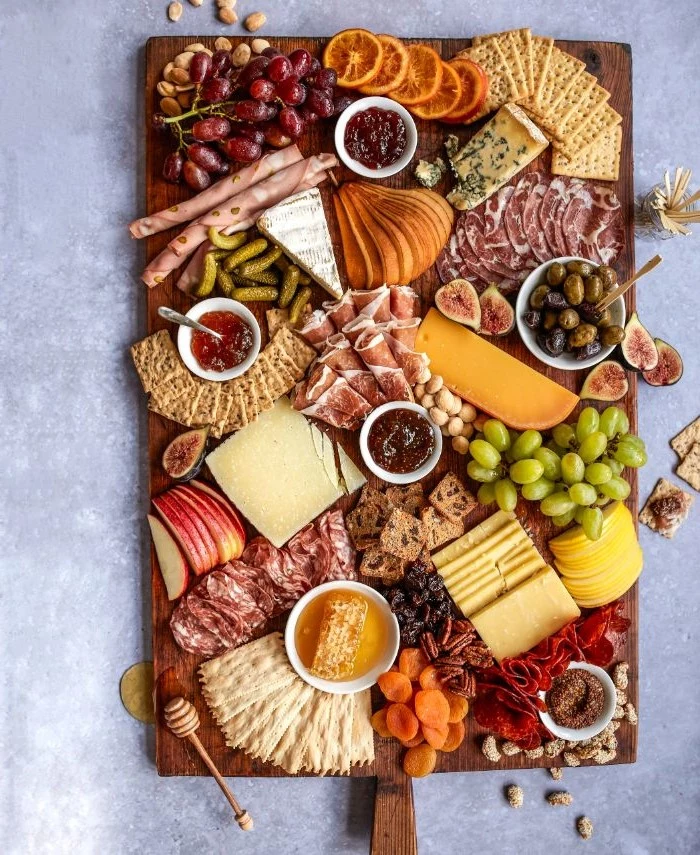
The ‘terroir’ of cheese is the idea that its flavor is directly influenced by the environment where it was made—the soil, climate, and the specific plants the animals ate. A Comté cheese from the Jura mountains in France tastes of the wildflowers and grasses the cows grazed on. This is why a cheese from one valley can taste remarkably different from one made just a few miles away.
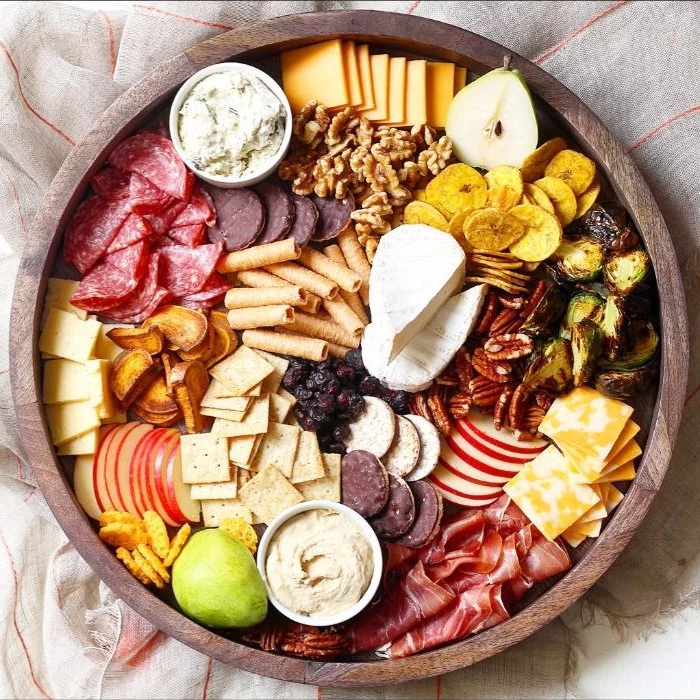
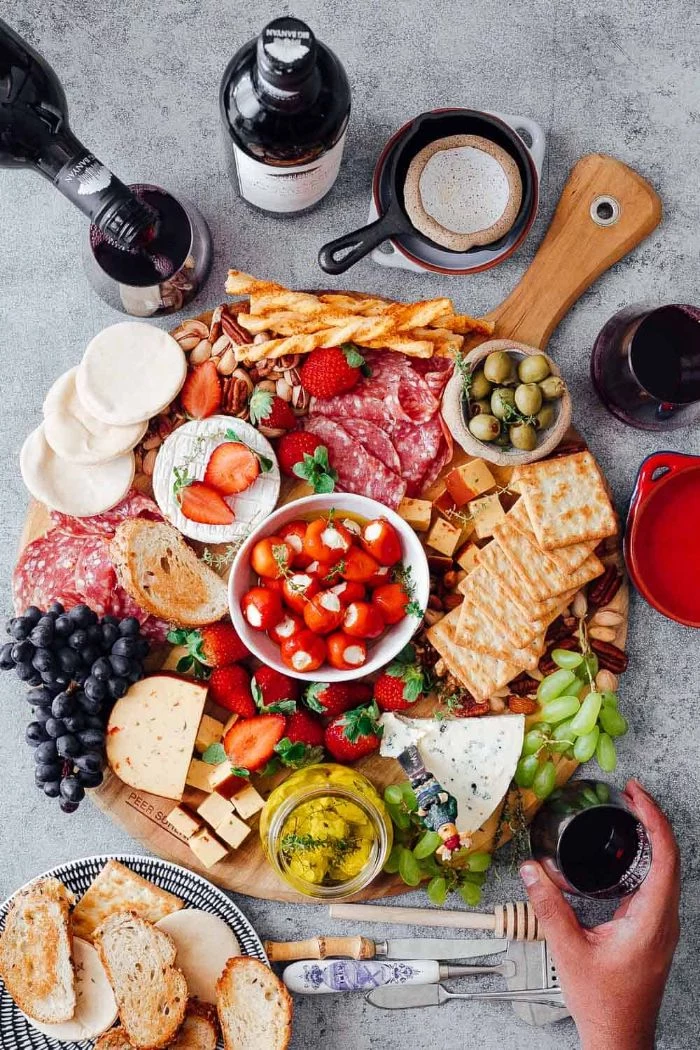
Don’t fear the blues! A wedge of blue cheese adds a bold, dramatic flavor that many people secretly love. Start with a milder, creamier variety like Gorgonzola Dolce or a Danish Blue. Their pungent, salty kick is the perfect foil for something sweet, like a drizzle of honey or a slice of fresh pear. A little goes a long way, but its presence elevates the entire board.
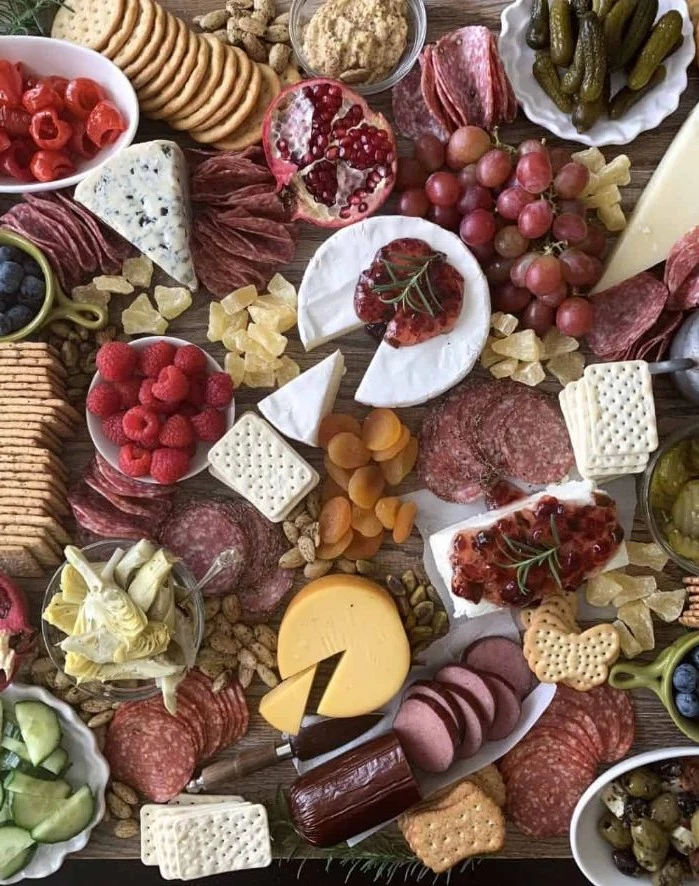
When selecting cheeses, aim for a variety of milk types. Including a cheese from a cow (like an aged Gouda), a sheep (like a sharp Pecorino Romano or nutty Manchego), and a goat (like a tangy, fresh chèvre) provides a full spectrum of flavors and textures, from creamy and mild to crumbly and intense.
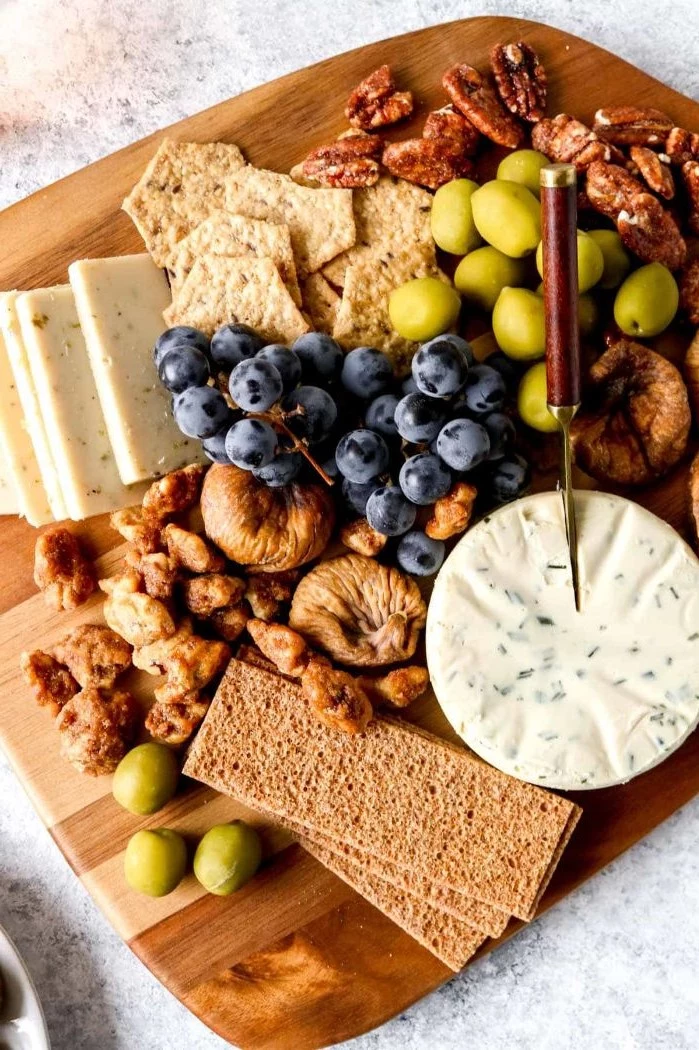
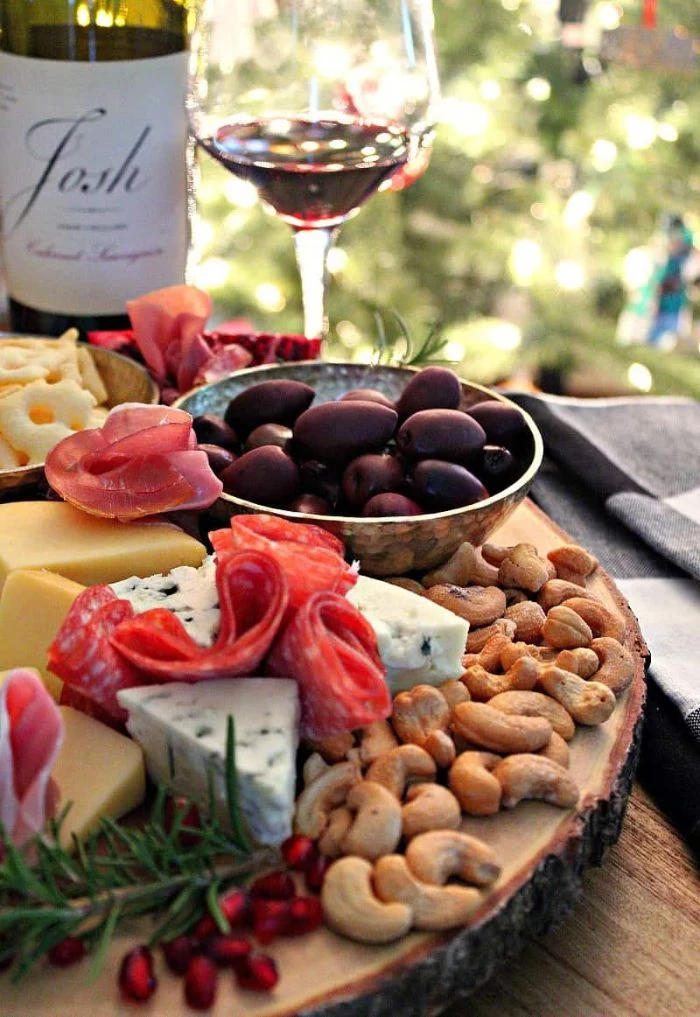
In France, there is a legal standard known as Appellation d’Origine Contrôlée (AOC), which dictates that for a sausage to be called ‘Saucisson de L’Ardèche’, it must be produced in that specific region using traditional methods.
This highlights the deep cultural and regional importance of charcuterie. When you choose a product with a protected designation, you’re not just buying meat; you’re tasting a piece of geography and history, crafted with time-honored expertise.
Hard Cheeses (like aged Cheddar or Parmesan): Offer a nutty, salty, and often crystallized texture. They are easy to slice and handle, providing a satisfyingly savory bite.
Soft Cheeses (like Brie or a triple-crème): Bring a creamy, buttery richness that coats the palate. Their luxurious texture provides a wonderful contrast to crunchy crackers and crusty bread.
A great board needs both; one provides a sharp, complex foundation, while the other adds a decadent, mellow counterpoint.

